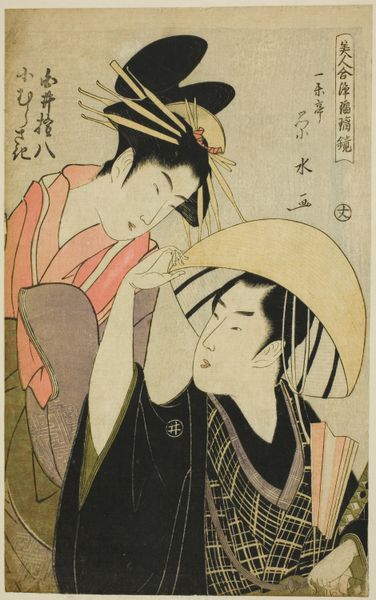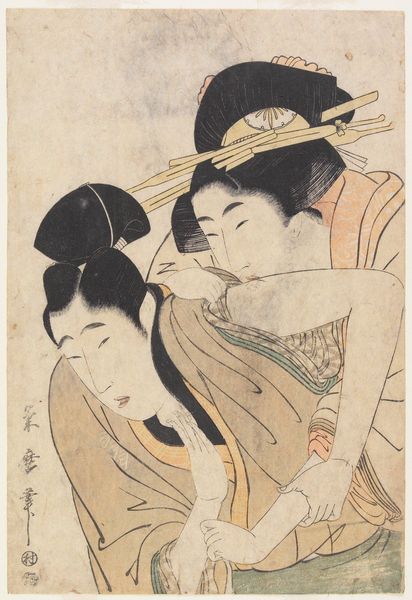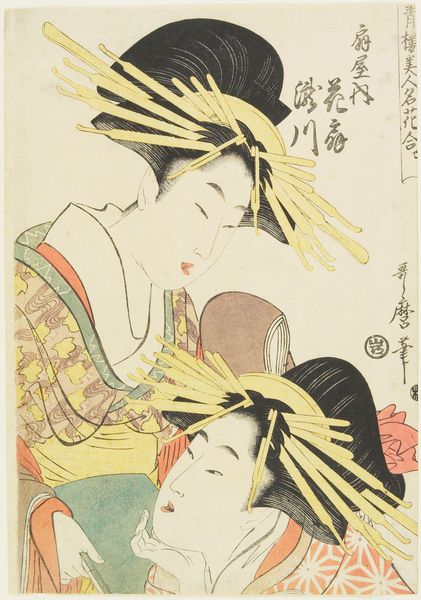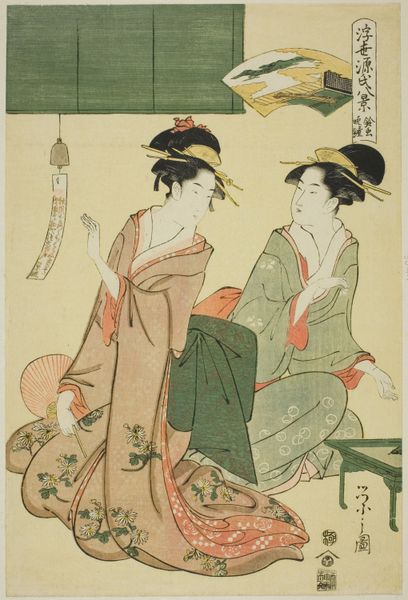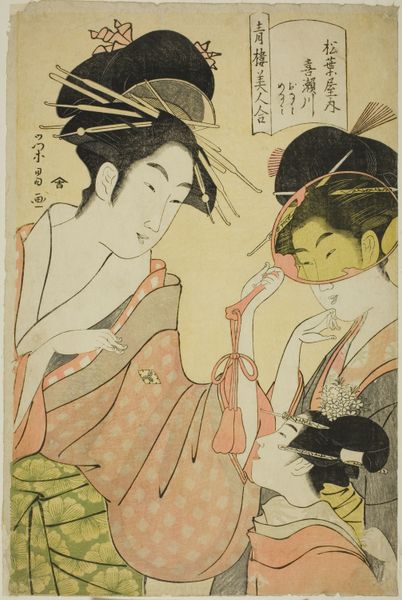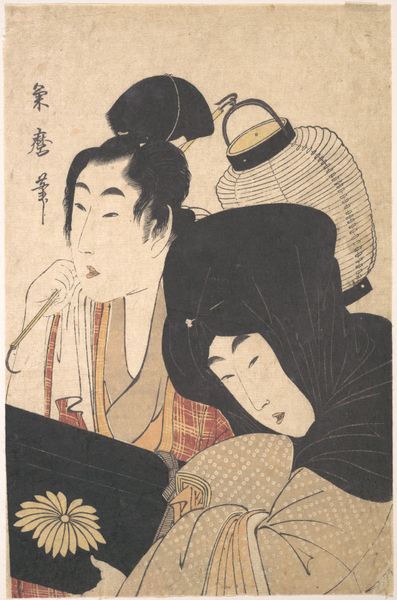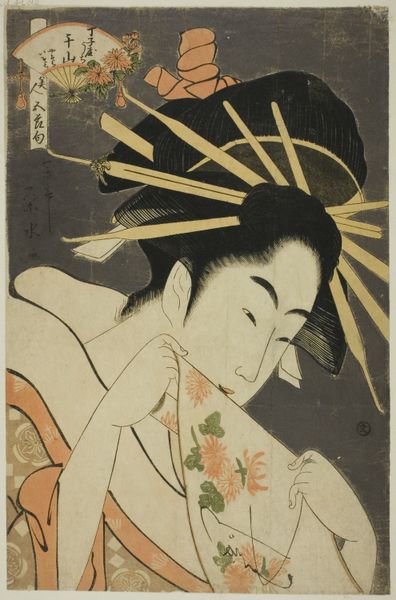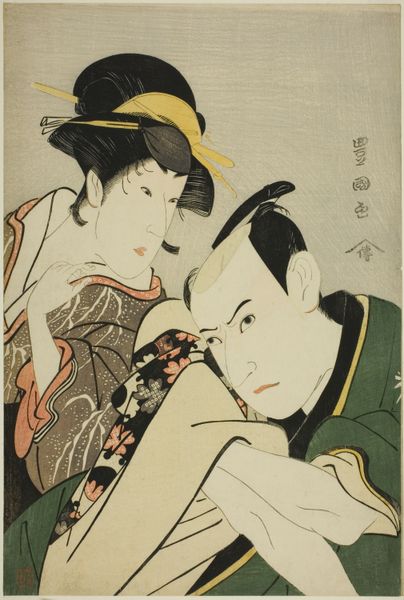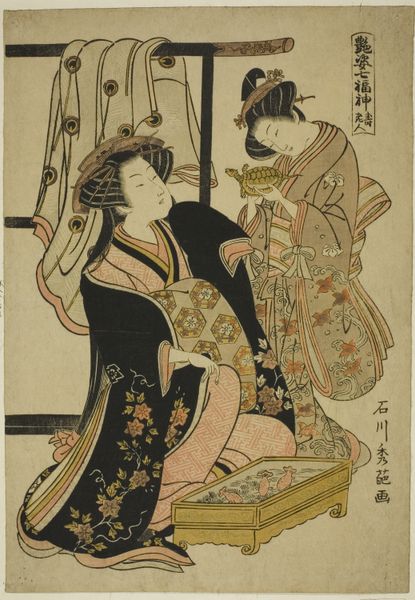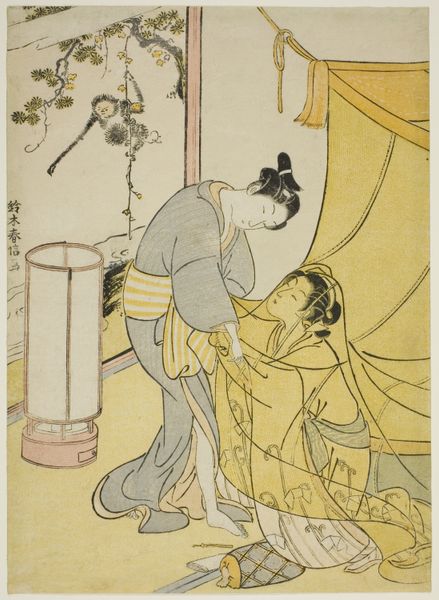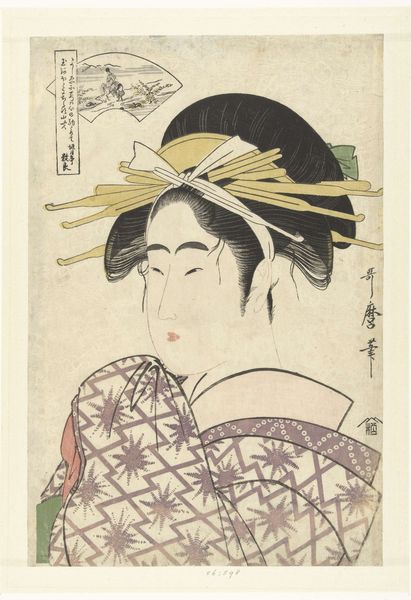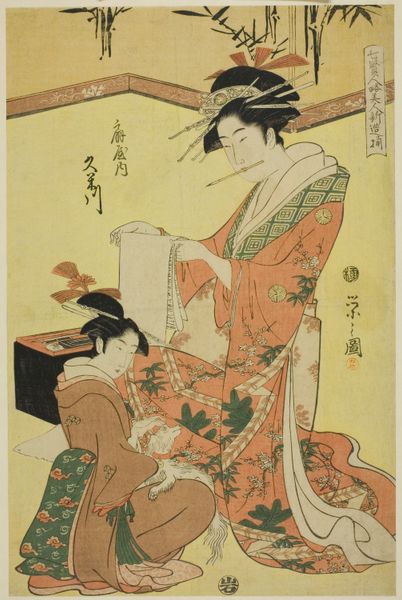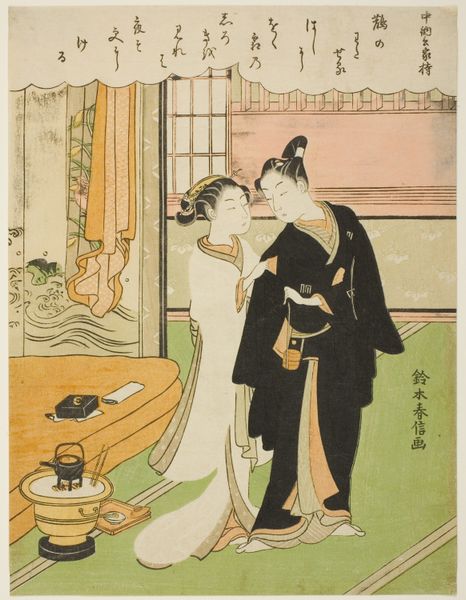
Osome and Hisamatsu, from the series "Beauties in Joruri Roles (Bijin awase joruri kagami)" c. 1795
0:00
0:00
#
portrait
# print
#
asian-art
#
caricature
#
ukiyo-e
#
genre-painting
Dimensions: 36.0 × 23.3 cm
Copyright: Public Domain
Editor: Here we have Ichirakutei Eisui's woodblock print, "Osome and Hisamatsu, from the series 'Beauties in Joruri Roles,'" created around 1795. There’s a somberness to their expressions, even though they're holding a lantern; the woman is gazing downward and the man is looking forward, but away. What cultural echoes resonate for you when you see this image? Curator: I'm drawn to the shared object – the lantern. In Ukiyo-e prints, lanterns often symbolize transient beauty, illuminating fleeting moments. It is possible that we’re witnessing a symbolic ritual: Osome is a name frequently tied to stories of ill-fated lovers. Does their subtle sadness relate to destiny, as their narrative unfolds? Editor: That's interesting. So, is their story already embedded, almost a cultural shorthand, available to the contemporary viewer of this print? Curator: Precisely. Notice how their garments also tell a story. The intricate patterns – almost like codes – are speaking about social standing, but perhaps even alluding to virtues or expectations placed upon them within their society. Does the weight of those expectations contribute to their solemn demeanor? Editor: I didn’t even notice all that was embedded in their garments, all that intricate symbolism. Curator: Images were never just representations. The Japanese theatrical world was like a great mirror. Ukiyo-e, prints like this, helped project tales, cultural ideas and fashion to a growing audience. Editor: So this print is less a record, and more like a cultural carrier? Fascinating! Curator: Indeed. They provide portals through time. Consider the lantern a beam, leading us into Edo period cultural depths.
Comments
No comments
Be the first to comment and join the conversation on the ultimate creative platform.
